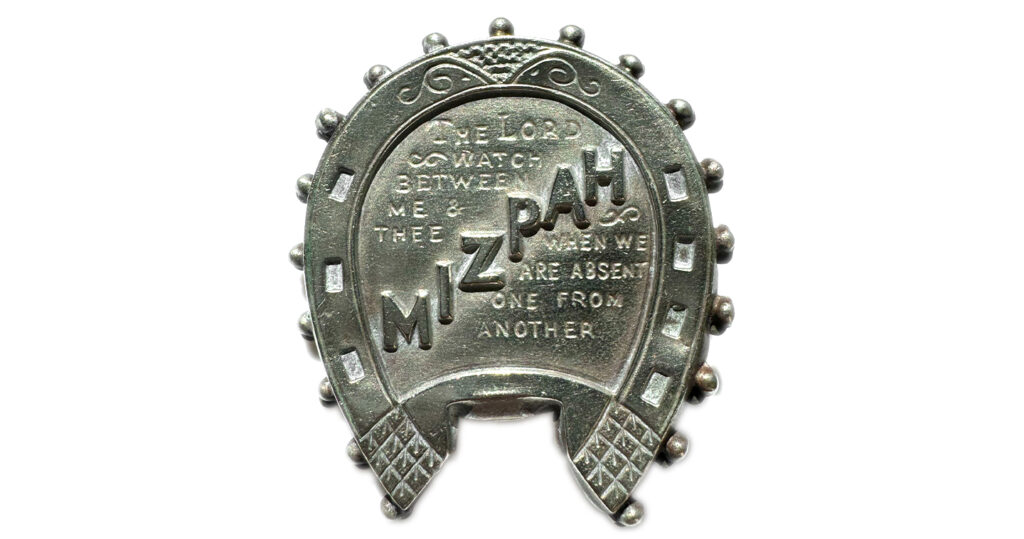Victorian Sentimentality in a Mourning Brooch
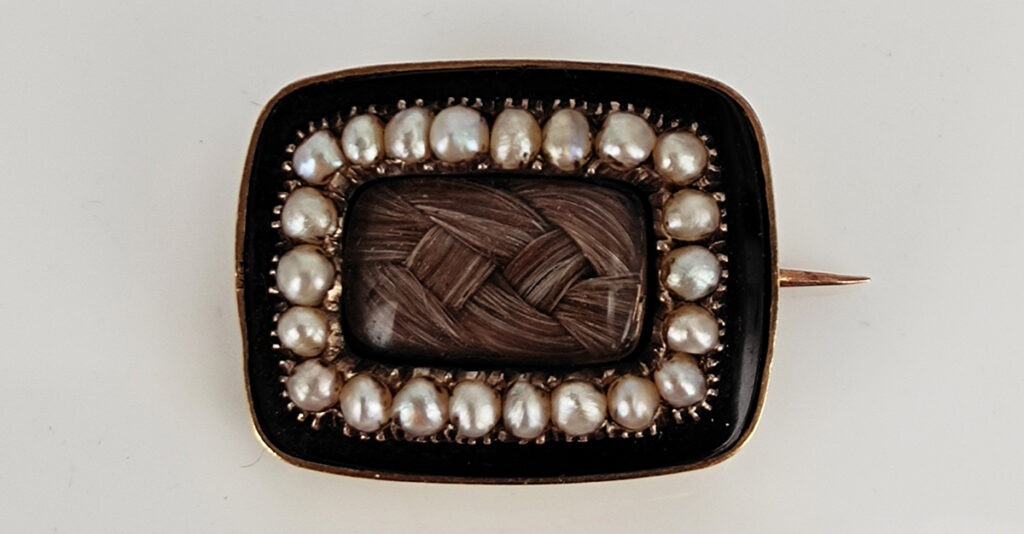
Queen Victoria and Albert set the standard for British society. Their family values, behaviours, gifts and promotion of 19th century industry all manifest in the sentimental and mourning jewels of the time. No other period during Victoria’s reign is as interesting to how mourning jewels were designed than the 1850s. In this brooch, the classical styles which had been brought back through the Gothic Revival had been removed to provide a clear representation of simplicity in death.
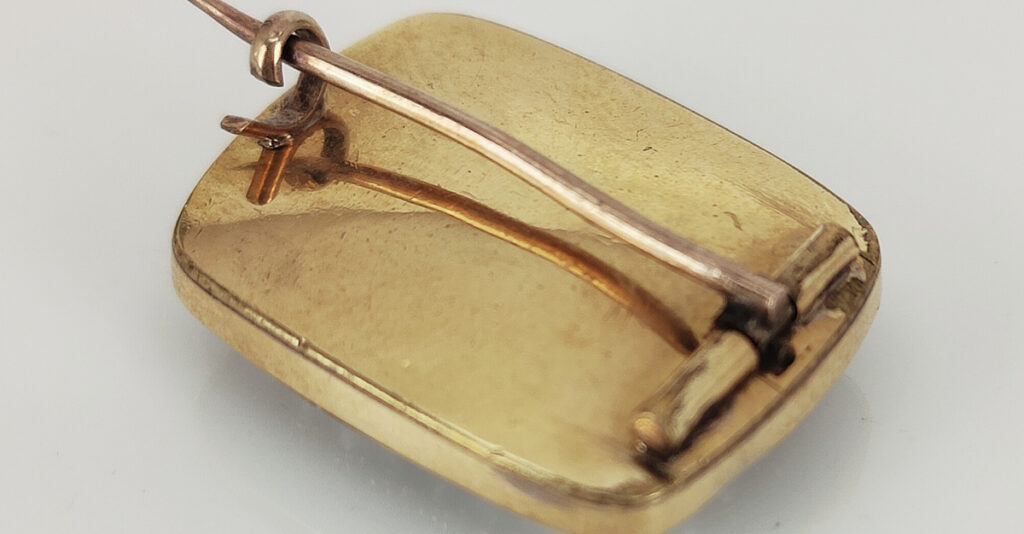
Prince Albert’s death in 1861 set the nation into universal mourning conformity, following on from the static style set by Queen Victoria’s perpetual mourning. Jewellery designers were adapting styles to fit into the Classical Revival periods, but by the 1880s, the ‘Empire’ style reflected the Neoclassical styles of simple lines and bold ‘IN MEMORY OF’ typography.
Styles of the 1850s had not yet had the impact of Albert’s death and the span of the British Empire had a global reach. British styles and industry were felt internationally, with a great sense of pride in British social values. The Great Exhibition of 1851 came about during a time of European and Latin American economic turmoil in 1848, leading to revolutions following the rise of nationalism. Albert’s dedication towards acknowledging the underprivileged and offering financial and educational assistance was an incredibly bold stance for the time, particularly when his family in Europe was being threatened. From 1843, Albert was President of the Society of Arts, which, from its annual exhibition, became the basis for the Great Exhibition.
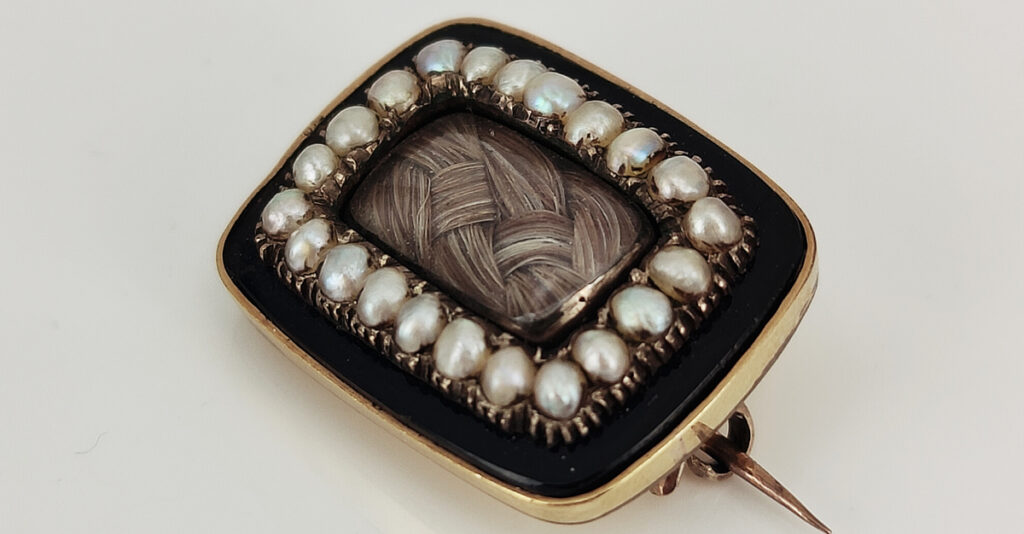
An 18ct gold ring is a grand statement of the status of the Alywin family, with his children likely receiving rings identical to this as a keepsake of his memory. Personal statements of respect and memory from the children or partner of the deceased were more often designed into mourning rings during the 1850s, a custom that was common in the black and white enamelled band styles of the early 19th century.
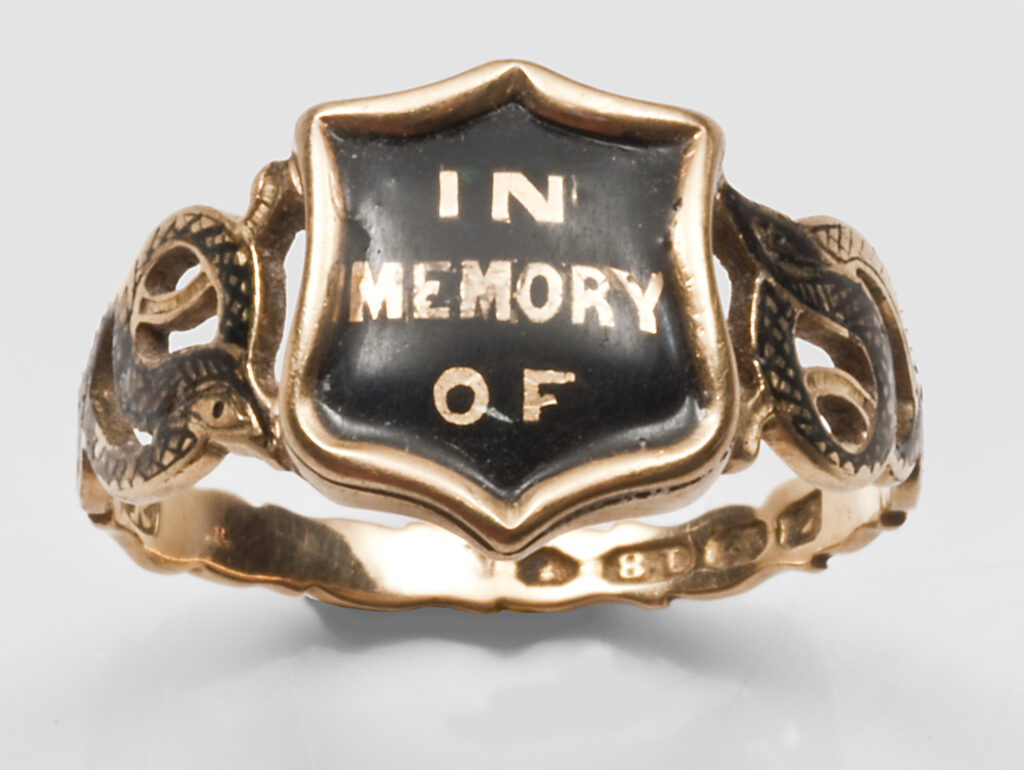
Large shields with ‘IN MEMORY OF’ and the symbols/materials made popular by Queen Victoria and her family were respectful and affluent. Woven human hair began to be placed in glass compartments underneath the bezel of the ring.

Victoria’s Symbolic Attachment
Victoria’s sentimental, symbolic values represented her views on life and death. Beset with the sudden tragedy of losing her soulmate, the symbols of her youth carried through the times of her relationship during its prosperity and held its values after he had passed away.
At no point were these sentimental jewels inaccessible for the population of the United Kingdom. Their replication and constant use in society was a repetitious image of identity and family values, which only instilled the meaning of what a ‘good’ family should be. Victoria’s family was this template and her symbols resonated this all through her life.
These values are all expressed in another one of her sentimental bracelets. Charm bracelets are easily adaptable and speak to the continuity of life for the person who wore it. They can express love, discovery, grief, religion, national pride and hope. No other Victorian jewel expresses the personal values and no other jewel could amplify the personal message of the wearer.
Victoria’s values were all held within this bracelet, as can be seen in the symbolism associated with it. The heavy wear to the enamel shows just how often she wore this bracelet, which consists mostly of black enamel inlay.
Cross: Religion
Her strong Christian influence is seen in the variations of the cross, which was her own preference of moral support, rather than simply the Divine Right of Kings. Though she was a figurehead, her belief system as Lutheran was ingrained in her as a child, especially during the time of the Gothic Revival, which was influenced by religious practice, lifestyle and the romanticism of the Middle Ages. There was a simplicity in religious practice and ceremony that she preferred and it translates well into her preference for symbols in jewellery. The pieces are bold and simple, with the cross and its dual meaning of ‘hope’ being represented in many of the lockets.
Anchor: Hope and Nationalism
The British ‘family’ was fully formed by the 1850s and the kingdom was flourishing from industrialisation and urbanisation.
Writers, such as Charles Dickens, provided the world with an insight as to how life and behaviour were, from the hard, working class schoolhouses of Oliver Twist to the moral values of A Christmas Carol, social behaviour became something that was published internationally. Media supported the views of popular culture, all driven from the love between a Queen and her Consort.
Opportunity in the Kingdom to improve your life in the 1850s hit a new height with gold discoveries in the colony of Victoria, Australia in 1851. People could enter and change their fortunes, or enter into trades via apprenticeships to provide for their families. Not all was prosperous, as dissatisfaction from the Irish grew and would turn into the Fenianism movement in the 1860s.
Nationalism was driven by innovation led by Albert. It cannot be understated for its values and impact upon society. The Great Exhibition of 1851 came about during a time of European and Latin American economic turmoil in 1848, leading to revolutions following the rise of nationalism. Albert’s dedication towards acknowledging the underprivileged and offering financial and educational assistance was an incredibly bold stance for the time, particularly when his family in Europe was being threatened. From 1843, Albert was President of the Society of Arts, which, from its annual exhibition, became the basis for the Great Exhibition.
Based in Hyde Park within The Crystal Palace, the value of science, art and industry became a matter of pride for British society – A progressive step, and one that shows the great innovation of Albert, himself. As a counter to revolution, The Great Exhibition stood fast and as a catalyst for art and innovation, the impact upon jewellery design that was revealed through new techniques of metallurgy and style resonated back through society.
The anchor, denoting hope, is as much a national statement as it is a religious one. It was a statement of national pride during the Napoleonic Wars and remained one through Victoria’s reign.
Heart: Love
A fundamental aspect to all sentimental jewels is that their core symbol is the message of love. All other symbols associated with it are there to support and carry the love on through memory, fidelity, eternity, trust and hope.
Victoria’s use of the heart motif carries forward the basic symbolic message that had become popular during the 17th century. Following Henry VIII’s 1534 Acts of Supremacy and removal of Catholic imagery, Puritanical values went an extra step in symbolic value to bring the values of love and death being represented by actual elements of the body. Memento mori symbols, featuring the skull, crossphones, hourglass and death, became associated with mortality and death alone. The heart as a stylised shape became a common symbol, seen used liberally in Royalist jewels to reinstate the House of Stuart, such as lockets showing love for the king.
Victorian values often have their roots directly to the bible. Their Christian values are held deeply within their family values. In the case of the heart, Proverbs 3:3-4 reads:
Let love and faithfulness never leave you;
bind them around your neck,
write them on the tablet of your heart.
Then you will win favour and a good name
in the sight of God and man.
Proverbs 3:3-4
Wearing the heart as a locket is a deep commitment of sentimental love for the person whom it is for. As sentimental value became more a social custom in the middle of the 19th century, hearts in jewels were a nice sentiment of personal value and not necessarily related to an offering of personal love.
Star: Discovery
New challenges, such as Darwin’s On The Origin of the Species (1859), threatened the Christian family that had been established by Victoria and Albert, with the theory of evolution creating a moral panic. It’s a challenge to religion, but it’s also a progressive move for British science, in which Darwin was supported for a knighthood by Albert.
Business could flourish through new discoveries. The more that was seen upon the earth, the stars and the sky, the more value was put into the achievements of humanity. Combine this with national pride and there is a progressiveness in the 1850s that sets the British Empire strides ahead of other industrialised cultures. Jewellery designers could capitalise on this by influencing jewellery symbols with those from other cultures, or what was seen in the natural world.
Catalogued flora and fauna were being identified for their sentimental purpose. Colour theory had been influential in jewellery meaning from the late 18th century, but by the 19th century, a vast cataloguing of plants and animals associated an anthropomorphic meaning to them. ‘Floriography’ began the process of cataloging each flower and giving it a meaning. This reached its peak in the Illustrated Language Of Flowers by Anna Christian Burke, published in 1856, but others had begun the process, from Henry Phillips’ Floral Emblems, published in 1825, to Frederic Shoberl’s The Language of Flowers; With Illustrative Poetry, in 1834.
Now, jewellery designers could amplify their product designs with new floral meanings across a wide range of products.
Romanticism flourished in literature and art, notably by the Pre-Raphaelite Brotherhood in the late 1840s. Looking towards medieval culture for inspiration and harshly turning against realism, many of the mourning and sentimental symbols that are common today in jewellery and funerary art were carried through by their use in art. The Arts and Crafts movement would continue these values, in order to bring back the craftsmanship that had been lost through industrialisation.
Jewellery influences from the Middle East and India began to heavily influence European jewels by the start of the 1860s. This effect was a combination of discovery and cultural appropriation, with the jewellery designs of Britain and France utilising the primary styles of the lands they had occupied. The Art Journal of London pushed for influences from Syria and Palestine and the French moved towards a Moroccan style, as they had territories in North Africa.
This ‘Moresque’ style introduced the star and crescent shapes into popular jewellery designs, making them heavily iconic of jewellery designs of the latter 19th century.
The brooch featured in this article appears courtesy of Kalmar Antiques, who you can find on Instagram, Twitter and on their website.




